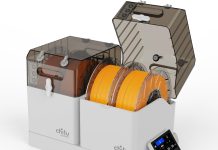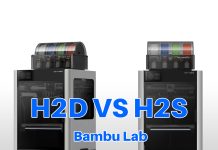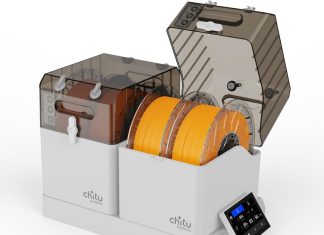3D printing enthusiasts know that the key to making stunning prints is not just in the printer itself but also in the software, settings, and choices made throughout the printing process. Among affordable resin printers, the Anycubic M7 Pro has gained significant attention for its user-friendly features and impressive capabilities. However, mastering this machine involves understanding its resin profile to unlock its full potential. This article serves as a comprehensive guide to navigating the Anycubic M7 Pro resin profile from setup to perfection.
Getting Started with Your Anycubic M7 Pro
Before diving into the intricacies of the resin profile, let’s cover the basics to get your Anycubic M7 Pro up and running:
1. Unboxing and Assembling
Out of the box, the M7 Pro comes well-packaged, minimizing the risk of damage during transit. The assembly process is straightforward, generally involving:
- Attaching the build plate to the Z-axis arm.
- Installing the resin vat.
- Connecting any necessary power and USB cables.
Always consult the user manual for specific instructions tailored to your model.
2. Software Installation
Next, you’ll need to download the compatible slicing software that supports the M7 Pro, such as Anycubic Photon Workshop or Lychee Slicer. These programs allow you to prepare your 3D models by slicing them into layers that your printer can understand.
3. Choosing the Right Resin
The choice of resin is crucial for achieving the best results. Anycubic offers a range of resins for different applications, such as standard, flexible, and tough resins. When selecting resin, take into account:
- Print Resolution: Higher resolutions may require specialty resins that cater to fine detail.
- Strength Requirements: If your prints will be subjected to stress or impact, opt for tough resins.
Navigating the Resin Profile Settings
Once your printer is set up, the next step is to familiarize yourself with the resin profile settings in your slicing software.
1. Layer Height
Layer height determines the quality and details of your print. Typical values are between 0.01 mm to 0.05 mm for resin prints. For detailed models, lean towards the lower end. Keep in mind that thinner layers increase printing time.
2. Exposure Time
One of the most significant parameters in the resin profile is exposure time. Each layer must be cured by a UV light, and the exposure time varies depending on the resin:
- Bottom Layer Exposure: This is typically longer (between 30-90 seconds) to ensure strong adhesion to the build plate.
- Regular Layer Exposure: Standard exposure times range from 2 to 20 seconds, depending on the complexity of the print and the type of resin used.
3. Lift Speed and Retract Speed
These settings control how fast the build plate lifts after each layer. A slower lift speed can help prevent print failures, especially for intricate designs. A typical range is between 1 to 5 mm/s.
4. Anti-Aliasing Settings
Anti-aliasing helps smooth out the surface of the print. Depending on your needs, you can set this to on or off. Using it can significantly improve print quality, particularly for fine details.
5. Support Settings
Strong supports are crucial in resin printing, especially for larger prints or complex geometries. When adjusting support settings:
- Use the automatic support generation feature to place supports strategically.
- Ensure there’s sufficient contact between the support and the model to mitigate sagging during the print.
Calibration and Testing Prints
After the initial setup of your resin profile, calibrate your printer for optimal results:
- Test Prints: Begin with small test models to check for any settings that need adjustment. Common test prints include calibration cubes or specific benchmarks tailored for the Anycubic M7 Pro.
- Iterate Settings: Depending on the results, adjust exposure times, lift speeds, and support settings. Don’t hesitate to experiment; every printer and resin combination is unique.
Troubleshooting Common Issues
While operating the Anycubic M7 Pro, you may encounter issues like layer adhesion failures, print warping, or surface imperfections. Here are some troubleshooting tips:
- Layer Adhesion Issues: Try increasing the bottom layer exposure or adjusting the lift speed.
- Surface Imperfections: Check your exposure times; too much exposure can lead to over-curing and surface irregularities.
- Warping or Falling Over: Ensure your print is well-supported, and consider lowering the print speed.
Concluding Thoughts
Mastering the resin profile of the Anycubic M7 Pro is key to creating flawless prints. As you gain experience, you’ll become adept at adjusting settings for different resin types and models to achieve the best results. Remember, each print offers a learning opportunity—embrace the journey from setup to perfection, and soon you will be reaping the rewards of your creativity in stunning 3D-printed models. Happy printing!






